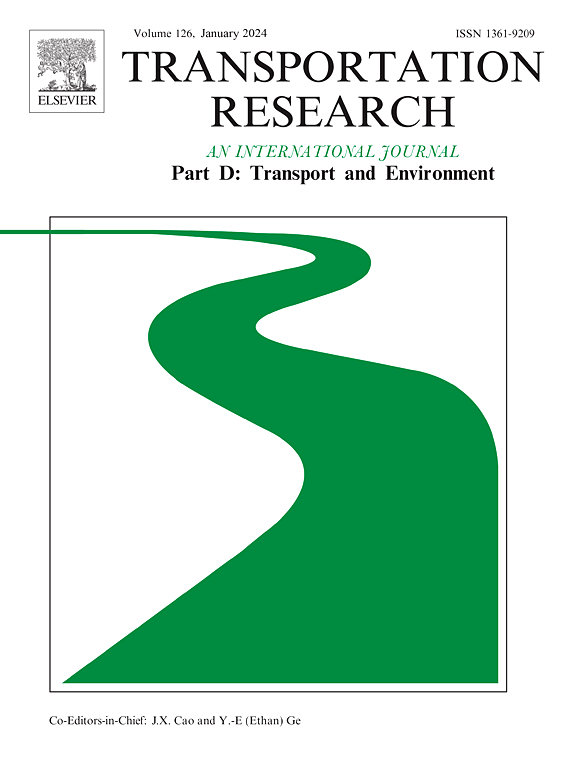重新审视建筑环境和车辆行驶里程:汽车拥有量重要吗?
IF 7.3
1区 工程技术
Q1 ENVIRONMENTAL STUDIES
Transportation Research Part D-transport and Environment
Pub Date : 2025-05-06
DOI:10.1016/j.trd.2025.104798
引用次数: 0
摘要
虽然文献已经广泛地评估了建筑环境(BE)、汽车保有量和车辆行驶公里数(VKT)之间的关系,但缺乏对汽车保有量对VKT的因果影响的研究。此外,对于有车和无车的人之间的BE和VKT连接是否不同以及如何不同,我们知之甚少。基于中国长春的大规模调查数据,采用双机器学习和梯度增强决策树两种机器学习模型来填补上述空白。研究结果表明,汽车保有量与VKT之间存在因果关系。拥有汽车的平均治疗效果占有车与无车人群VKT差异的17.18%。居住和工作场所的所有BE因素都与VKT产生非线性关联。此外,两组人之间的关联也不同。研究结果为完善政策制定和BE规划提供了启示。本文章由计算机程序翻译,如有差异,请以英文原文为准。
Revisiting built environment and vehicle kilometer traveled: Does car ownership matter?
Although the literature has extensively evaluated the relationships between the built environment (BE), car ownership, and vehicle kilometers traveled (VKT), there is a lack of research on the causal effect of car ownership on VKT. Moreover, little is known about whether and how the BE and VKT connections differ between car and non-car owners. Two machine learning models, namely double machine learning and gradient boosting decision trees, are applied to fill the above gaps based on large-scale survey data from Changchun, China. The findings show a causal relationship between car ownership and VKT. The average treatment effect of car ownership accounts for 17.18 % of the difference in VKT between car and non-car owners. All BE factors at both residential and work locations exert nonlinear associations with VKT. Moreover, the associations differ between the two groups. The findings offer implications for refined policymaking and BE planning.
求助全文
通过发布文献求助,成功后即可免费获取论文全文。
去求助
来源期刊
CiteScore
14.40
自引率
9.20%
发文量
314
审稿时长
39 days
期刊介绍:
Transportation Research Part D: Transport and Environment focuses on original research exploring the environmental impacts of transportation, policy responses to these impacts, and their implications for transportation system design, planning, and management. The journal comprehensively covers the interaction between transportation and the environment, ranging from local effects on specific geographical areas to global implications such as natural resource depletion and atmospheric pollution.
We welcome research papers across all transportation modes, including maritime, air, and land transportation, assessing their environmental impacts broadly. Papers addressing both mobile aspects and transportation infrastructure are considered. The journal prioritizes empirical findings and policy responses of regulatory, planning, technical, or fiscal nature. Articles are policy-driven, accessible, and applicable to readers from diverse disciplines, emphasizing relevance and practicality. We encourage interdisciplinary submissions and welcome contributions from economically developing and advanced countries alike, reflecting our international orientation.

 求助内容:
求助内容: 应助结果提醒方式:
应助结果提醒方式:


